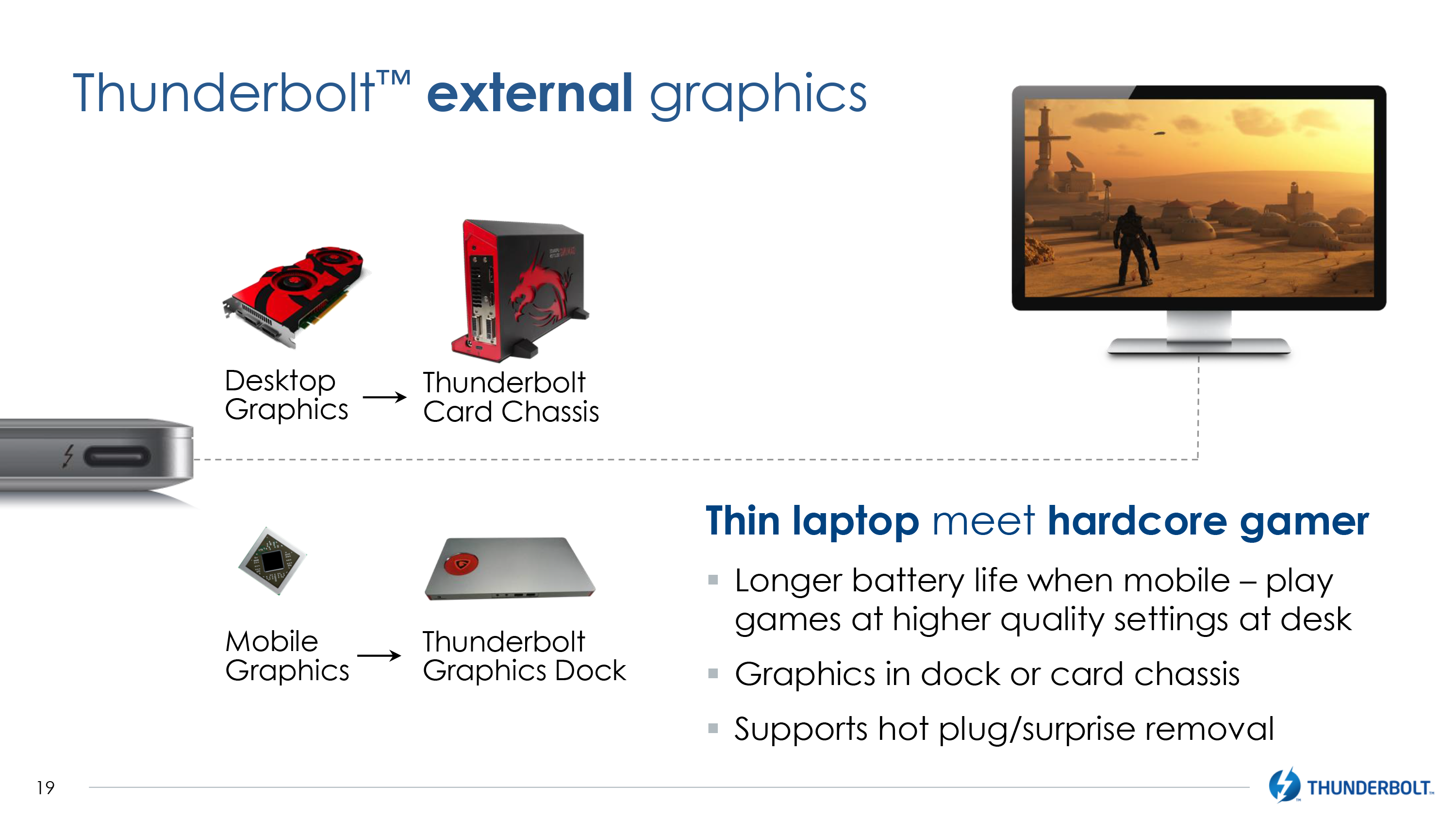

The premier (and most expensive) option, it's currently under development for a 2016 launch. Strangely enough DisplayPort isn't supported Intel believe that those who use Thunderbolt 3.0 for displays will be catered to by the passive 20Gbps option.ģ.) Active 40Gbps Optical. Higher manufacturing costs required for an active connector are passed on to the owner, and are really for situations which have very high bandwidth demands. The maximum cable length is around 2 metres, but a range of options are available.Ģ.) Active 40Gbps Copper.

A relatively low-cost option based on the USB Type-C cable, it's most suited to consumer markets with only limited high-bandwidth requirements and small distances between devices. Intel are planning three different cable options for Thunderbolt 3.0, targeting three markets (and price points).ġ.) Passive 20Gbps Copper. Thunderbolt 3.0 aims to be far more comprehensive. Similar networking modes are available with Thunderbolt 2.0 but Intel have commented that support is spotty and often both driver and firmware dependent. With Thunderbolt 3.0 and two systems can be directly connected and communicate at up to 10Gbps, plus the feature will be available cross-platform and between Windows, Mac and Linux devices. Lesser trumpeted functionality being made more broadly available with Thunderbolt is what they're calling '10Gb Ethernet for Free'. Although NVIDIA graphics will likely be supported at some point in the future their focus is on launching with AMD support. It turns out that plans for just such a range of graphics docks are in the works, where Intel have partnered with AMD to clear any technical hurdles and certify the solution to Intel's rigorous demands. Thunderbolt 3.0 allows for a far more powerful, stationary dock with discrete gaming graphics capability that can take advantage of the improved bandwidth on offer from the updated standard. Limited forays into creating discrete external graphics enclosures from the likes of MSI didn't gain much traction, but as the capabilities have improved so the potential for the feature has slowly been creeping upwards. Thunderbolt makes use of high-bandwidth PCI-Express signalling, the only impediments therefore are hardware based. By offloading high-power graphics operations to a discrete, removable and independently powered card you not only greatly improve notebook battery life but also make the notebook itself smaller and lighter whilst 'on the go' when high-power graphics are unnecessary. The use of discrete external graphics has been mooted with Thunderbolt since its introduction to the PC.


 0 kommentar(er)
0 kommentar(er)
